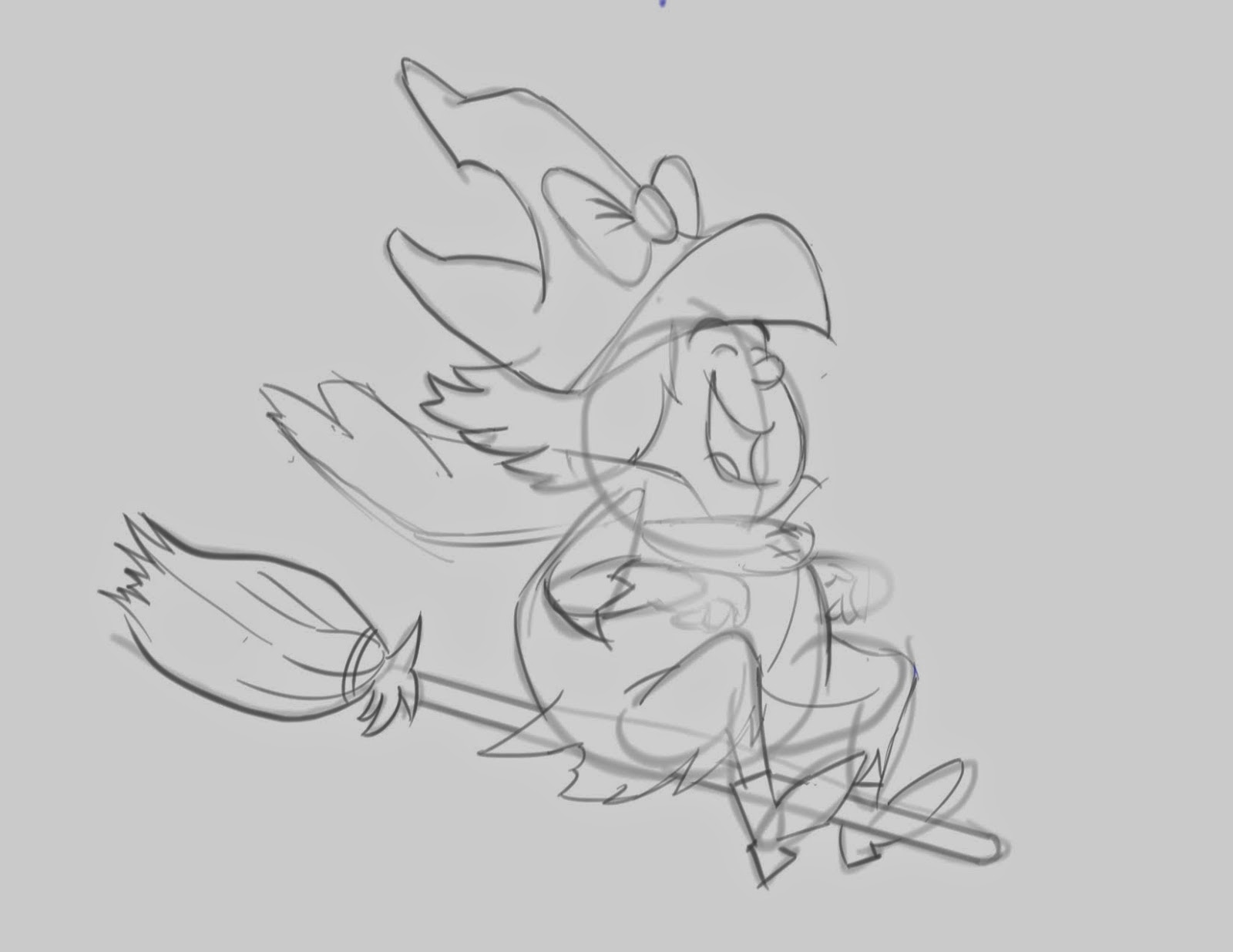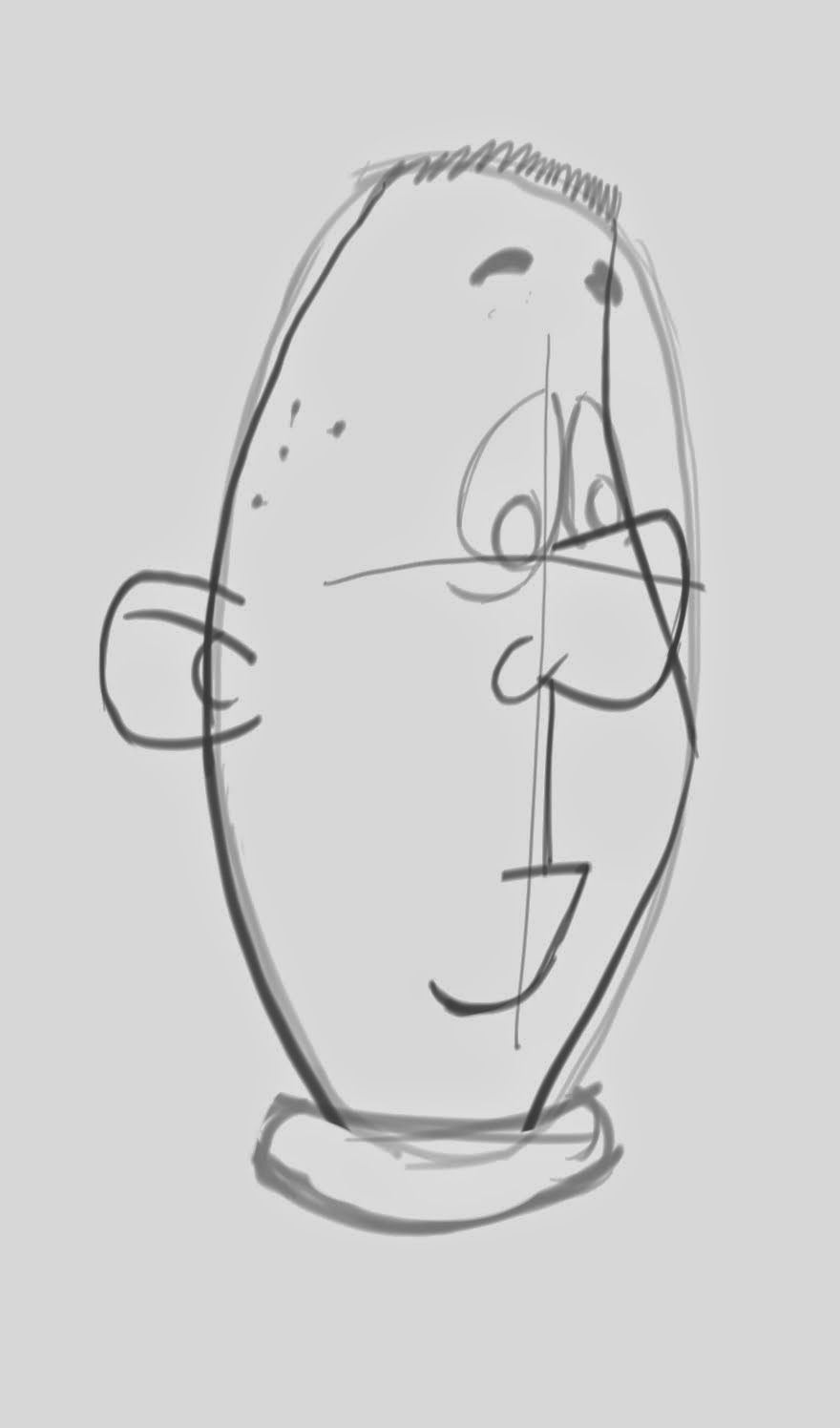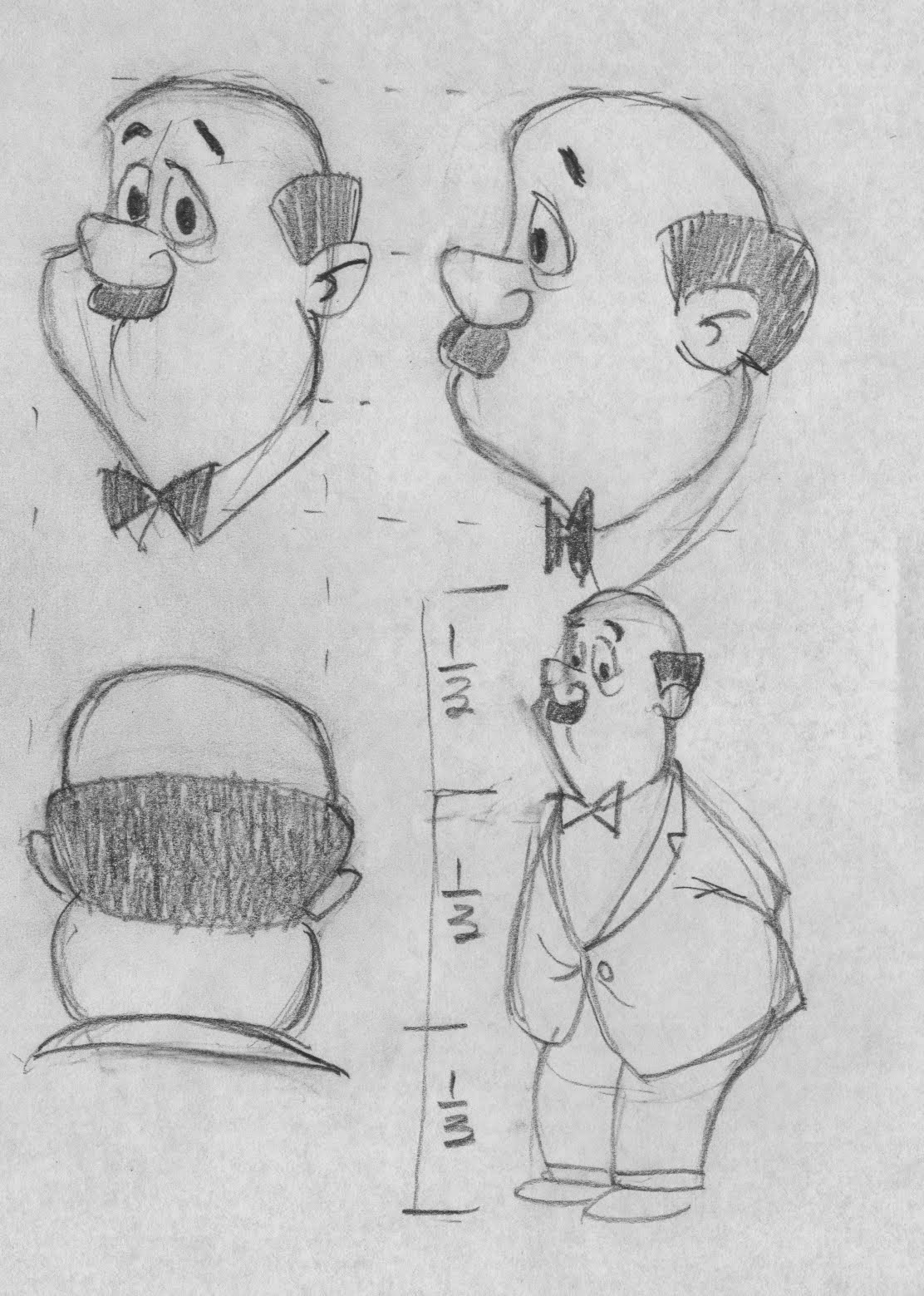The basic rule is: we draw with shapes. If we're using a pencil, we use lines to define those shapes. If we're drawing with paint, we can define the shapes with "blobs" of paint. In either case, the shapes are the main things. We begin our drawing by deciding on our shapes.
Cartoons are chock full of examples where a very clever person transforms a few basic shapes into an interesting drawing. I looked around for a couple of cartoons based on very simple shapes... simple, and yet the final drawing was complex enough that it keeps our interest.
The first example is the Hanna Barbera character: Winsome Witch. We start with 2 basic ovals:
I got a little ahead of myself here and started adding other details... but you can see the body oval and the head oval. These 2 ovals comprise the basic character. Then I started tacking on arms and legs, a hat, and put her on a broom (all based on a HB model sheet).
Now we fill some details:
Now it's starting to look more like WW. Pretty happy gal, by the way.
Finally the clean-up:
And there's Winsome Witch... a character based on 2 ovals.
Here's another example of Winsome. Here's the 2 ovals:
I started by defining the ovals and added the suggestion of arms, legs, and her hat. And her nose!
Then I began building up the details:
And the final details:
I love this pose, by the way. Incidentally, some of you might be asking: what became of the original blue pencil ovals? Well, with digital programs it's easy to change the color of your pencil lines. I start in blue pencil so it's easy to distinguish the details over the basic drawing. Once it starts pulling together, though, I change the original blue to a more realistic graphite color.
In my search for cartoons based on very simple shapes I came across Fred Seibert's site (of his many, many sites) extolling praises for Eric Robles' development of the Fan Boy and Chum Chum characters.
Robles truly is a character designer-extraordinaire. His characters are based on extreme simplicity of shape... and yet they are full of life. Here's an example of Boog (the guy with the Frosty Cup hat):
We start with what only can be described as a hot dog:
... kind of a fat hot dog at that.
Then we start defining the pose and a few of the details:
Next I started filling in the details... but notice that I "thinned out" the original drawing a bit, something that's easy to do digitally but would be a real pain in the rear with paper and pencil:
It's hard to get your proportions exact at the beginning.
Now we build up:
... and the final details:
So here I've presented 2 examples of robust, interesting cartoon characters based on very simple shapes. I think there's a lesson here: if you are designing a character, keep the basic design very simple. You can add complexity in the details but the basic structure should be easy to draw.
At least, that's the lesson
I'm getting from this.














































